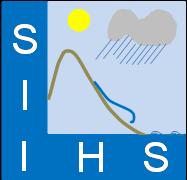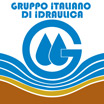
I
Short Course
Landslide Processes and Land Management Effects
by Roy C. Sidle
Aversa, 26 November 2015
Landslides are major erosion processes that shape our landscape. Whether by large episodic, or smaller chronic, mass movements, our mountains, hills, valleys, rivers, and streams bear evidence of change from landslides. When they affect people and property, landslides (as natural processes) become natural disasters, causing damages and fatalities. In turn, anthropogenic activities can affect the frequency of landslide occurrence or create situations of critical instability.
This course will cover some of the important natural factors and management influences that control and affect landslide initiation and propagation. Emphasis will be placed on rainfall-initiated landslides and the associated hydrologic processes that trigger these events. Other natural factors that influence landslides will also be discussed, including geologic, geomorphic, soils, and vegetative effects. These processes will be related to various landslide types. The major land management practices that contribute to landslide initiation will then be presented, including timber harvesting, roads/trails, urbanization, and forest conversion. Finally, examples of methods used to assess and predict landside hazards will be presented.
The course will be taught in English. The following book will be used extensively in the course and will be distributed to students for their personal use only: Landslides: Processes, Prediction, and Land Use (2006) by R.C. Sidle & H. Ochiai, American Geophysical Union Water Resources Monograph 18; https://www.agu.org/cgi-bin/agubookstore. Reading background for this short course is listed below. Students may also want to read Chapter 4 of the book to be familiar with simple landslide analysis methods.
Anticipated Topics to be covered:
- Natural Factors Influencing Landslides
- Overview of landslide classification (Chapter 2 – pages 23-39)
- Hydrological factors and rainfall conditions affecting landslides; various hydrologic triggering mechanisms (Chapter 3 – pages 67-89)
- Geological, soils and geomorphic factors influencing landslide initiation (Chapter 3 – pages 41-67)
- Vegetation influences on landslides; rooting strength and evapotranspiration (Chapter 3 – pages 89-110)
- Land Management Practices that Contribute to Landslide Initiation:
- Timber harvesting (Chapter 6 – pages 163-183)
- Roads and trails (Chapter 6 – pages 183-203)
- Forest conversion to agriculture/plantations (Chapter 6 – pages 203-209)
- Urbanization/residential development (Chapter 6 – pages 217- 230)
- Overview of landslide assessment and prediction methods
(Chapter 5, if time allows)
The course will be held at Dipartimento di Ingegneria civile, Design, Edilizia e Ambiente of the Seconda Università degli Studi di Napoli, located in Aversa (CE), Real Casa dell'Annunziata, via Roma.
Anybody who is interested is warmly invited. Owing to limited capacity of the hall, interested participants are invited to register in advance by sending an e-mail to roberto.greco@unina2.it. Priority will be given to Ph.D. students and young scientists in general.
Patronage by:
Associazione Geotecnica Italiana






